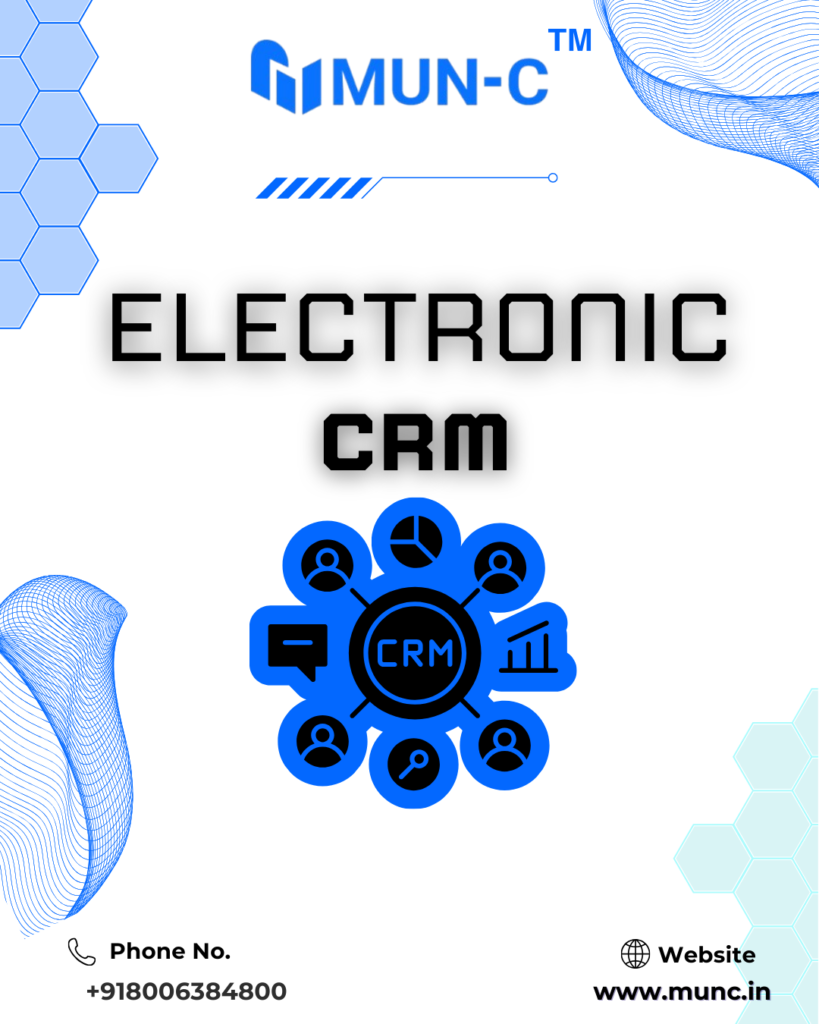Why Electronic Customer Relationship Management Matters Today
In today’s fast-paced digital world, Electronic Customer Relationship Management (ECRM) has become a cornerstone for businesses aiming to thrive. For companies like MUN-C, which plans to adopt CRM software soon, understanding ECRM’s role is vital. It streamlines interactions, personalizes service, and builds lasting customer loyalty—all while adapting to modern demands. Imagine a busy café owner remembering every regular’s favorite order; ECRM does that digitally, but on a larger scale. Let’s explore why ECRM is no longer optional but essential.

What is CRM Software? A Digital Ally for Modern Businesses
CRM software is a digital tool designed to manage customer interactions, track data, and automate tasks. Think of it as a digital notebook that never loses details. For MUN-C, adopting such software could mean smoother communication, fewer errors, and faster response times. Picture a sales team no longer scrambling to find client emails or purchase histories—everything is in one place.
But CRM isn’t just about efficiency. It’s about empathy. When teams have instant access to customer preferences, they can respond with care. For example, if a client mentions a birthday during a call, the system flags it. Suddenly, a personalized email feels less like automation and more like a thoughtful gesture. MUN-C’s future CRM could turn mundane tasks into moments of connection.
ECRM in Marketing and Banking: Building Bridges, One Click at a Time
When asking, “What is CRM in marketing?” the answer lies in targeted campaigns. ECRM tools analyze customer behavior, enabling personalized promotions. Imagine a clothing brand suggesting winter coats to customers in chilly regions—or sending discounts to lapsed buyers. It’s not just smart; it’s considerate.
Similarly, customer relationship management in banking relies on Electronic Customer Relationship Management to enhance trust. Banks use it to track transactions, predict needs, and offer tailored financial advice. For instance, if a customer’s spending pattern suggests they’re saving for a home, the bank could proactively share mortgage options. For MUN-C, integrating these strategies could mean stronger client bonds across industries.
The Dual Edges: Benefits and Drawbacks of CRM Technology
The advantages of CRM are undeniable. It boosts efficiency, reduces costs, and improves customer retention. Automated reminders ensure no follow-up slips through the cracks. Data analytics reveal trends, like peak complaint hours, so teams can prepare.
However, challenges exist. Implementation costs, staff training, and data privacy concerns are common drawbacks. Imagine a small business overwhelmed by complex features or employees resisting change. Yet, with careful planning—like MUN-C’s phased approach—these hurdles become manageable. Start with basic features, train teams gradually, and prioritize security. The key? Balancing technology with the human touch.
How electronic CRM Empowers Customer Relationship Managers: From Chaos to Clarity
Customer relationship manager responsibilities include resolving complaints, nurturing leads, and ensuring satisfaction. Without ECRM, this can feel like juggling blindfolded. But with real-time data, managers prioritize urgent issues. For example, a CRM dashboard might highlight a VIP client’s unresolved query, prompting immediate action.
Predictive analytics also let managers forecast trends. If holiday sales usually spike, they can allocate resources in advance. For MUN-C, this means empowering teams to focus less on admin and more on meaningful engagement. And, when employees are happy then customers are happy as well.
Features of ECRM: Beyond the Basics
Modern features of e CRM go beyond contact management. AI-driven insights detect patterns humans might miss. Chatbots handle routine queries, freeing staff for complex issues. Omnichannel support lets customers switch between email, chat, or phone without repeating their story.
A well-designed CRM dashboard acts as the command center. Imagine a single screen showing KPIs, pending tasks, and customer histories. CRM dashboard design matters too—intuitive layouts ensure even non-tech users at MUN-C can navigate data effortlessly. Color-coded alerts or drag-and-drop widgets make the system feel less like a tool and more like a teammate.
Linking ECRM to Customer Satisfaction: Small Gestures, Big Impact
Customer relationship management and customer satisfaction are deeply connected. ECRM identifies pain points quickly, allowing proactive solutions. For instance, if a client faces payment issues, automated alerts let teams intervene before frustration escalates.
But satisfaction isn’t just about solving problems—it’s about surprises. A CRM might flag a loyal customer’s anniversary with MUN-C, prompting a thank-you note. These gestures cost little but leave lasting impressions. For MUN-C, this could mean transforming one-time buyers into lifelong advocates.
The Road Ahead for MUN-C: A Journey, Not a Sprint
While MUN-C hasn’t yet implemented CRM software, its future adoption promises transformative benefits. Transitioning requires patience. Start by auditing current workflows: Where do delays happen? What customer feedback is overlooked? Involve teams in selecting the right CRM—after all, they’ll use it daily.
Pilot the software with a small group first. Celebrate early wins, like faster response times or positive customer reviews. Address concerns openly; maybe host “CRM coffee chats” to demystify the tool. Remember, technology works best when people feel heard.
Final Thoughts: People First, Technology Second
Electronic Customer Relationship Management isn’t just a trend; it’s a necessity in a competitive landscape. For MUN-C, embracing ECRM means unlocking efficiency, satisfaction, and growth. But behind every dashboard and dataset are real people—clients craving attention and teams eager to excel.
By focusing on user-friendly tools and continuous learning, MUN-C can turn today’s plans into tomorrow’s success stories. After all, the heart of ECRM isn’t software; it’s the relationships it nurtures. And in a world craving connection, that’s what truly matters.
